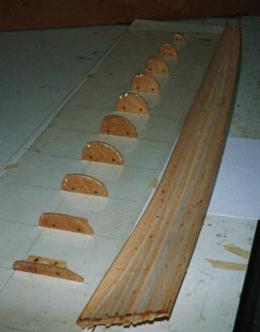
The Hull Shell Broken free of the Moulds
The bare hull shells are planked from 3mm balsa.For lightness Balsa cement was used for glueing planks.
Another option would be Epoxy mixed with a lightweight filler.
Whatever is used it should be easy to sand!
 Click here for my Home page
Click here for my Home page



